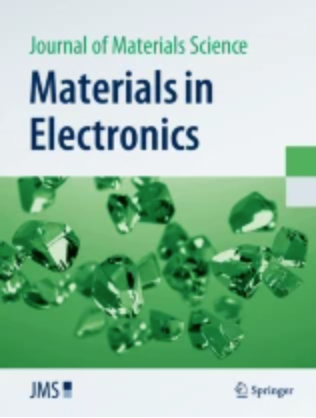Optical transmittance, optical homogeneity, HRXRD and third-order NLO properties of an organic 1H-benzotriazole salicylic acid (BHSA) single crystals
Abstract
The single crystals of an organic 1H-benzotriazole salicylic acid (BHSA) were harvested adopting solution growth method (SEST) and the characterizations carried out in the subsequent sections emphasize that it is reported for the first time in the literature with regards to the title crystal. The structural parameters of the grown crystals were assessed using XRD technique. The presence of internal structural grain boundaries was analyzed using high-resolution XRD (HRXRD) along (1 0 -1) plane. The vibrational assignments in the material were assessed using Fourier transform infrared (FTIR) analysis. The optical transmittance is found to be 67% with its cut-off and bandgap to be 339 nm and 3.55 eV, respectively. The stability as assessed by TGA-DTA is found to be 131 °C. The density of etch pits were 57.6 × 103 cm−2 for 4 s, 40 × 103 cm−2 for 6 s. Optical homogeneity has been analysed from birefringence interferometry. Brewster’s angle method was adopted to find the refractive index of the title material. Z-scan technique revealed the third-order nonlinear optical properties of the BHSA crystal.

 求助内容:
求助内容: 应助结果提醒方式:
应助结果提醒方式:


